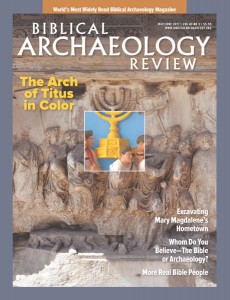As pharaohs were launching military campaigns into Canaan during the Late Bronze Age (c. 1550–1200 B.C.E., Egypt’s New Kingdom), they attempted to secure the empire’s northeastern frontier with fortifications along the coastal road (also called the Ways of Horus) connecting Egypt with Canaan in north Sinai. In the Biblical account of the Exodus, the Israelites do not attempt to take this more direct route to the “Promised Land,” but rather choose the longer way through the wilderness (see Exodus 13:17—18). Both the Biblical account and the archaeological remains—in addition to Egyptian records—illustrate that the maritime region of north Sinai was a critical point in the interactions between Egypt and the Levant.
Tell el-Borg
Tell el-Borg, vol. 1, The “Dwelling of the Lion” on the Ways of Horus Excavations in North Sinai
Already a library member? Log in here.
Institution user? Log in with your IP address.

